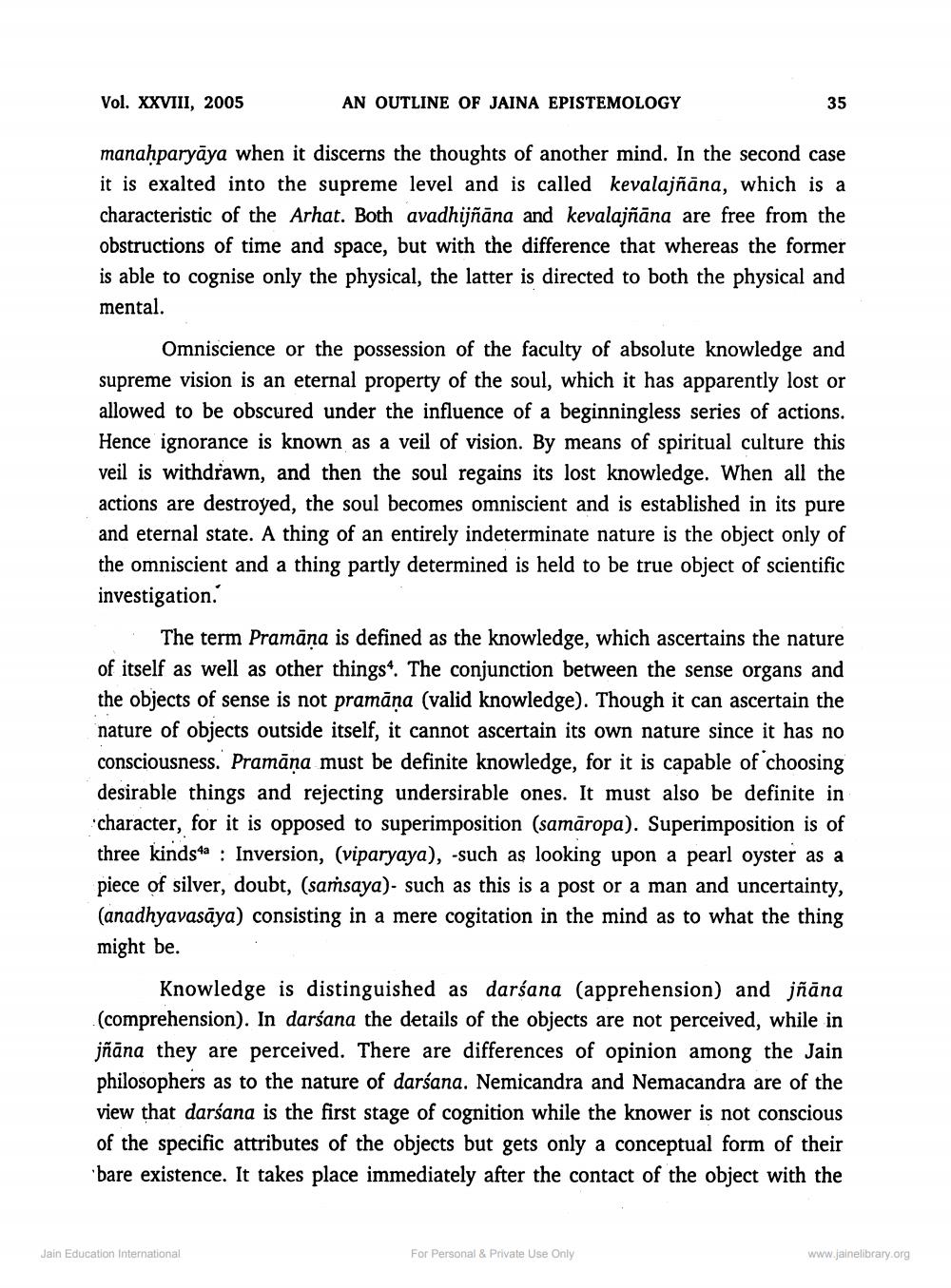________________
Vol. XXVIII, 2005
AN OUTLINE OF JAINA EPISTEMOLOGY
manahparyāya when it discerns the thoughts of another mind. In the second case it is exalted into the supreme level and is called kevalajñāna, which is a characteristic of the Arhat. Both avadhijñāna and kevalajñāna are free from the obstructions of time and space, but with the difference that whereas the former is able to cognise only the physical, the latter is directed to both the physical and mental.
Omniscience or the possession of the faculty of absolute knowledge and supreme vision is an eternal property of the soul, which it has apparently lost or allowed to be obscured under the influence of a beginningless series of actions. Hence ignorance is known as a veil of vision. By means of spiritual culture this veil is withdrawn, and then the soul regains its lost knowledge. When all the actions are destroyed, the soul becomes omniscient and is established in its pure and eternal state. A thing of an entirely indeterminate nature is the object only of the omniscient and a thing partly determined is held to be true object of scientific investigation.
The term Pramāna is defined as the knowledge, which ascertains the nature of itself as well as other things. The conjunction between the sense organs and the objects of sense is not pramāņa (valid knowledge). Though it can ascertain the nature of objects outside itself, it cannot ascertain its own nature since it has no consciousness. Pramāņa must be definite knowledge, for it is capable of choosing desirable things and rejecting undersirable ones. It must also be definite in character, for it is opposed to superimposition (samāropa). Superimposition is of three kinds4a : Inversion, (viparyaya), -such as looking upon a pearl oyster as a piece of silver, doubt, (saṁsaya)- such as this is a post or a man and uncertainty, (anadhyavasāya) consisting in a mere cogitation in the mind as to what the thing might be.
Knowledge is distinguished as darśana (apprehension) and jñāna (comprehension). In darśana the details of the objects are not perceived, while in jñāna they are perceived. There are differences of opinion among the Jain philosophers as to the nature of darśana. Nemicandra and Nemacandra are of the view that darśana is the first stage of cognition while the knower is not conscious of the specific attributes of the objects but gets only a conceptual form of their bare existence. It takes place immediately after the contact of the object with the
Jain Education International
For Personal & Private Use Only
www.jainelibrary.org




